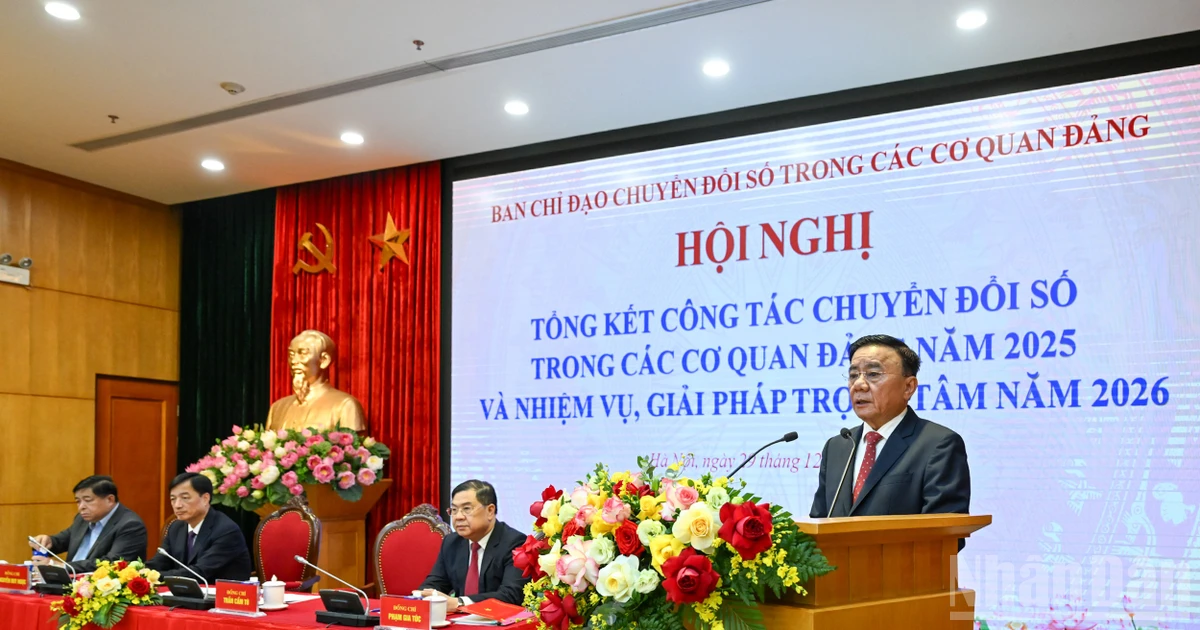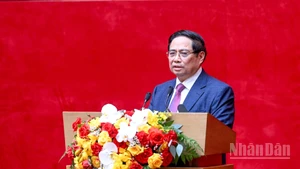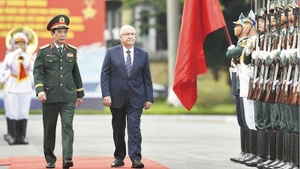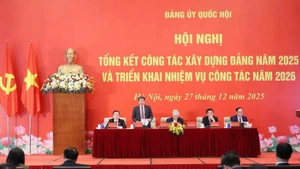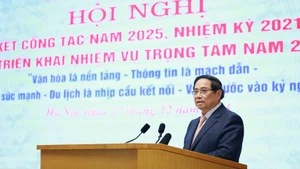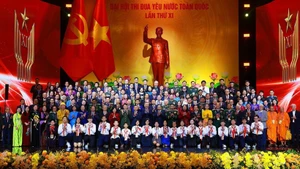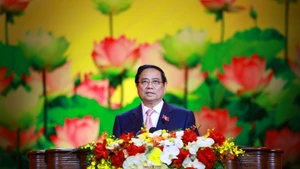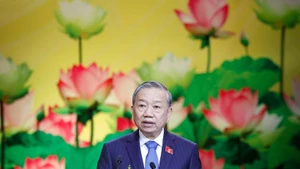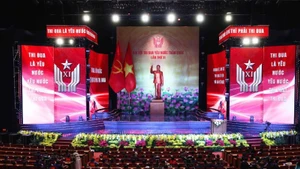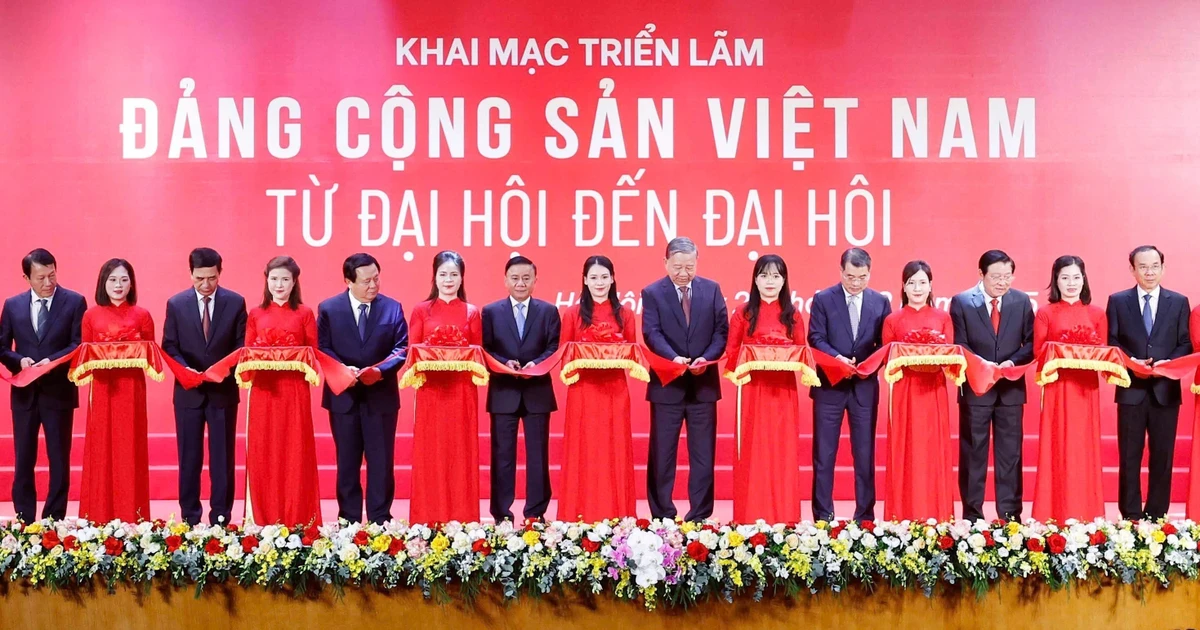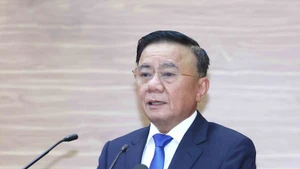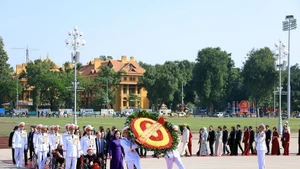From early morning, Ha Noi was bright with the red colour of revolutionary flags. Tens of thousands of peasants and poor labourers, carrying rudimentary weapons, marched from Lang and Moc to seize the Hoan Long District office, declaring the establishment of a revolutionary government in the Nga Tu So area, marking the beginning of the uprising in the inner city.
Tens of thousands of suburban residents from Thanh Tri, Thuong Tin, Phu Xuyen, Hoai Duc, Dan Phuong (Ha Dong), and Gia Lam (Bac Ninh), carrying Viet Minh flags, wooden sticks, machetes, and sickles, poured into the inner city with the force of a rushing torrent. They all gathered in front of the Opera House. The whole of Ha Noi seemed to tremble with the resounding chants: “Support the Viet Minh!”, “Revolutionary People’s Government!”, “Long live the victorious revolution!”, “Establish the Revolutionary People’s Committee!”, “Viet Nam is completely independent!”, “Down with the invaders!”, “Down with all anti-revolutionary forces in Viet Nam!”, and “Against aggression!”
At exactly 11 a.m., before more than 200,000 people assembled at the Opera House, the Uprising Committee read the call to insurrection. The rally quickly transformed into an armed demonstration to seize power. Revolutionary masses, led by self-defence units, split into two major groups to occupy key positions: the Kham Sai Palace, the Post Office, and the Police Headquarters.
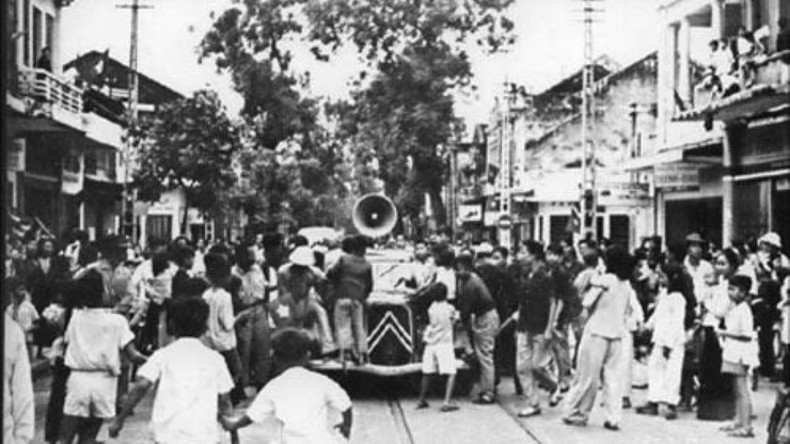
Faced with the overwhelming strength of the masses and the determined self-defence forces, almost all government offices of the enemy quickly fell into the hands of the people. At the Bao An Barracks, Japanese troops even sent tanks to block the demonstration but confronted with the fervent spirit of the masses; after being persuaded by our comrades, who clarified the Party and the Viet Minh’s policies, they were forced to withdraw.
As soon as the Kham Sai Palace was seized, a standing member of the Tonkin Party Committee who was present there called the mayors and provincial governors of Hai Phong, Hai Duong, Bac Ninh, Ha Nam, and Nam Dinh. He informed them that the revolution had triumphed in Ha Noi and ordering them to promptly hand over power to the local Viet Minh. By the evening of August 19, the uprising to seize power in Ha Noi had ended in complete victory.
The victory of the uprising in Ha Noi held profound significance.
For over half a century, Ha Noi had been the capital of French Indochina. The successful uprising in Ha Noi symbolised the collapse of the colonial regime in our country.
The triumph in Ha Noi delivered a fatal blow to the Japanese puppet administration across most of the country, driving them into despair, disintegration, and surrender to the revolution.
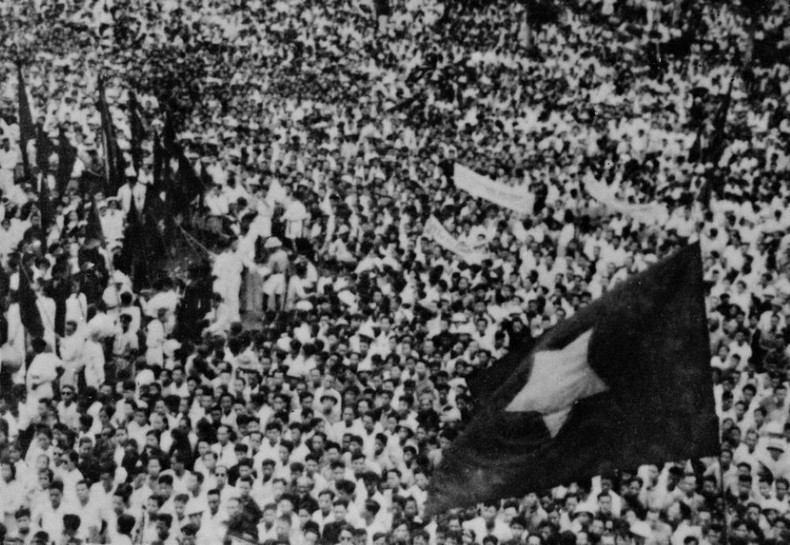
The success in Ha Noi, like a thunderous explosion, rapidly spread nationwide, inspiring and urging the people across the country to swiftly rise up and seize power. Almost all northern provinces down to Thanh Hoa and Nghe An followed Ha Noi’s lead and staged uprisings.
The victory in Ha Noi created conditions for the Party Central Committee and leader Ho Chi Minh to move the headquarters to Ha Noi, from where they directed the General Uprising nationwide to complete triumph, while also preparing conditions to receive the allied forces.
The victory of the uprising in Ha Noi also carried significance in suggesting a method of insurrection: “seizing power without bloodshed in areas contested with the Japanese and their puppet administration, or even in places where power had already been taken but not yet consolidated.”
Comrade Truong Chinh observed: “The victory of the uprising in the North, including both Ha Noi and Hue, was decisive for the revolution. The triumph in the North created the conditions and encouragement for the people in the South and other yet-to-be-liberated regions to rise and seize power without delay.” [1]
The victory of the uprising in the North, including both Ha Noi and Hue, was decisive for the revolution. The triumph in the North created the conditions and encouragement for the people in the South and other yet-to-be-liberated regions to rise and seize power without delay.
Comrade Truong Chinh
At Thai Nguyen, on the morning of August 19, the Vo Nhai District propaganda team mobilised the people and the self-defence forces of Dong Bam Commune to march into the town. The townspeople paraded in demonstration. In panic, the Japanese troops stationed there withdrew into their barracks for defence.
In harmony with the uprising in Ha Noi, the people in the provinces of Thai Binh, Phuc Yen, and Khanh Hoa, under the leadership of the Party and the Viet Minh Front, rose up and seized power successfully in their provincial capitals on the same day.
[1] Comrade Truong Chinh’s explanatory writing on the August Revolution, archived at the Institute of Party History.


